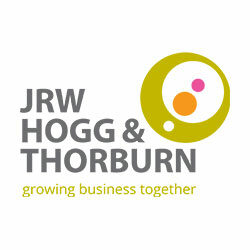Woodlands – a good business investment?
You have sold your business and are looking to invest the proceeds. Someone has suggested buying woodlands as a good opportunity because they come with financial incentives. But what are they? Kenny Adamson, Tax Partner highlights the opportunities.
Investing in land
With economic uncertainty starting to affect stock markets, investing in land seems to be coming back into favour especially where tax incentives are available. For example, woodlands can be eligible for various tax reliefs and exemptions plus schemes such as carbon offsetting.
In addition to tax incentives, there are several grants available such as the Woodland Creation Design Plan.
Tax breaks when acquiring woodland
Commercial woodlands are qualifying assets for capital gains tax (CGT) rollover relief. This means using the proceeds from the sale of your business to buy woodlands which you use commercially within three years allows you to indefinitely defer any CGT that would otherwise be payable.
EXAMPLE
In March 2025 David sold his furnished holiday letting business for £150,000, realising a gain of £70,000. In October 2025 he purchased woodlands for £140,000. £60,000 of the gain can be rolled over leaving a chargeable amount of £10,000 (£150,000 – £140,000). When David sells the woodlands the rolled over capital gain becomes chargeable.
Tax-exempt income
Income you derive from commercial woodlands, i.e. used for timber production, is exempt from income tax. However, income from short rotation coppice (farming immature trees) and amenity use of woodlands is not exempt. Other income derived from woodlands, such as rent from camping or the processing of timber is taxable.
You need to keep good records of the commercial business use of the woodlands to qualify for the tax breaks. HMRC might ask to see evidence of woodland management.
IHT tax break
Given their nature, woodlands are a long-term, possibly intergenerational, investment. Consequently, inheritance tax (IHT) may be an issue. The value of commercial woodlands owned for more than two years at the date of death or lifetime gift, including the land, can qualify for 100% business property relief (BPR). In effect, they escape IHT within the BPR limit. HMRC has confirmed that woodlands signed up to the woodland carbon code will qualify as a business asset for IHT relief purposes.
If business property relief (BPR) isn’t available, woodlands can qualify for either:
100% agricultural property relief (APR).
or
Woodlands Relief, which defers the IHT due on the value of the trees only. From April 2026, 100% BPR and APR only applies up to £1 million.
Tax breaks when selling woodlands
The value of the growing trees sold within woodlands is exempt from CGT. Felled trees can qualify for the CGT chattels exemption; this means CGT won’t apply to trees worth £6,000 or less. Any gain made from the land element of the sale can be deferred using rollover or gift relief.
IN SUMMARY
There’s a raft of local and central government grants for owning and managing woodlands. In addition, there are capital gains and inheritance tax breaks. Investing in woodlands allows you to defer tax on a gain you’ve made from selling a business. Up to 100% of the value of woodlands can escape inheritance tax.
Contact the JRW Hogg & Thorburn team to discuss this further and any other related questions you may have.
